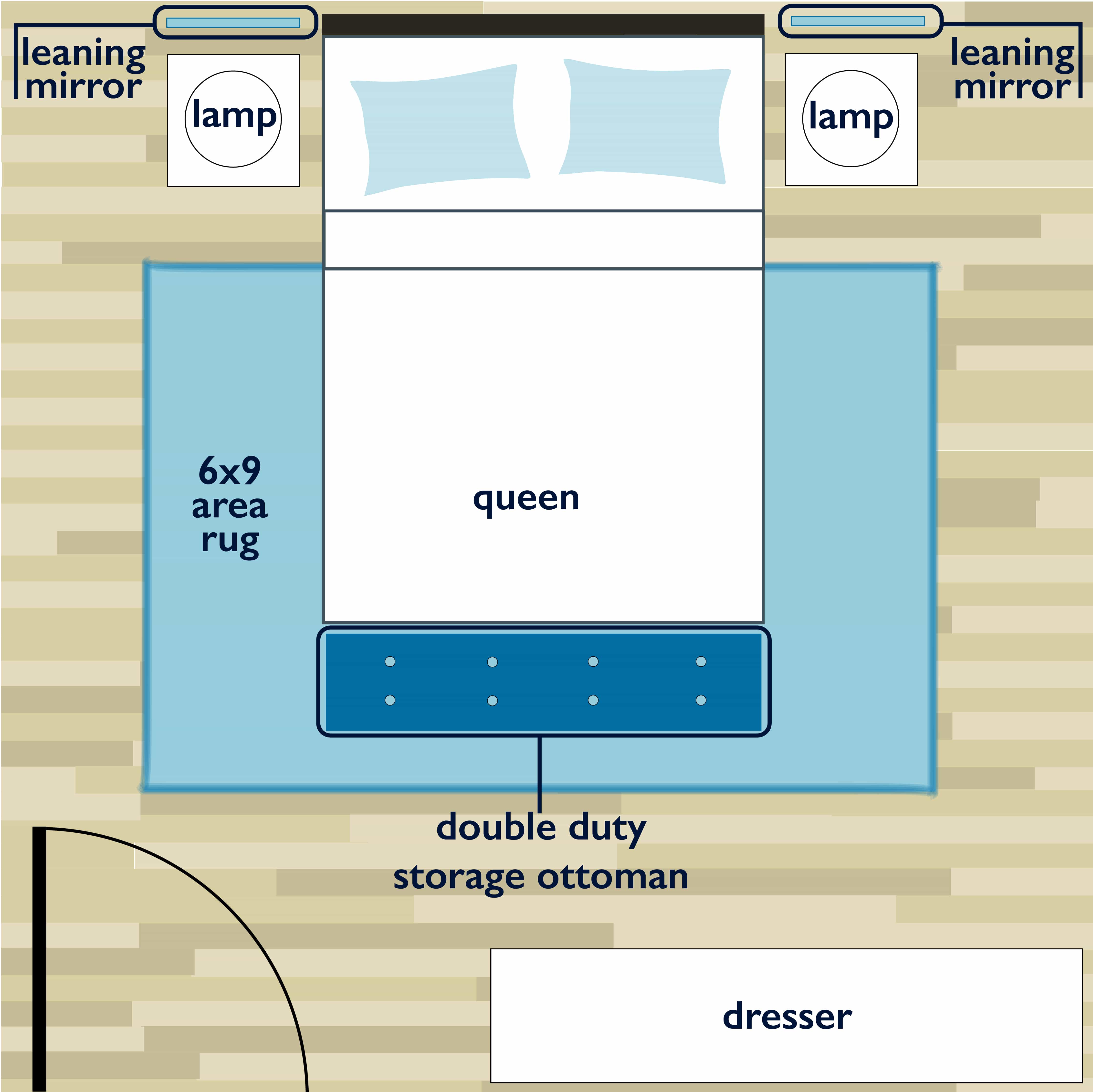Maximizing Space in a 12×12 Bedroom: 12×12 Bedroom Layout Ideas

A 12×12 bedroom, while cozy, can sometimes feel cramped. But with strategic planning and smart design choices, you can transform this space into a haven of comfort and functionality. By maximizing every inch, you can create a bedroom that feels spacious and inviting, without sacrificing style or practicality.
Designating Areas for Functionality
Defining specific zones within your 12×12 bedroom is crucial for maximizing space. This approach helps create a sense of order and allows you to utilize each area effectively.
- Sleeping Area: This is the focal point of the bedroom, so ensure it’s spacious and comfortable. Position the bed away from doorways and windows to create a sense of privacy and tranquility.
- Work/Study Area: If you need a dedicated workspace, consider a small desk or a fold-down table near a window for natural light. This area can be integrated into a corner or alcove, making it visually distinct while saving space.
- Storage Area: Utilize built-in shelves, under-bed storage, or a wardrobe to keep belongings organized and out of sight. This approach maximizes floor space and creates a clutter-free environment.
- Dressing Area: If space allows, a small dressing area with a mirror and a stool can be a valuable addition. It allows you to get ready comfortably without cluttering the main bedroom area.
Creating a Mood Board, 12×12 bedroom layout ideas
A mood board is a visual representation of your desired style and aesthetic for your bedroom. It serves as a guide during the design process, helping you choose colors, furniture, and accessories that complement your vision.
- Color Palette: Choose a color scheme that creates the desired mood. For a calming atmosphere, opt for soft pastels or neutral tones. Bold colors can add energy and vibrancy, while metallic accents can create a touch of glamour.
- Style Inspiration: Gather images of bedrooms that resonate with you. This could include contemporary, minimalist, bohemian, or traditional styles. Identify elements that appeal to you, such as furniture shapes, patterns, and textures.
- Materials: Consider the materials you want to incorporate, such as wood, metal, fabric, or glass. These choices influence the overall feel and functionality of the space.
Utilizing Vertical Space Effectively
Maximizing vertical space is a game-changer in a 12×12 bedroom. It allows you to store more while keeping the floor area open and uncluttered.
- Shelving: Incorporate wall-mounted shelves for books, decorative items, or clothing. This creates visual interest and frees up valuable floor space.
- Tall Storage Units: Consider a tall, narrow cabinet or armoire for storing clothes, linens, or other belongings. This solution maximizes vertical space while minimizing footprint.
- Hanging Storage: Utilize wall-mounted organizers, hooks, or hanging racks for accessories, bags, or scarves. This approach keeps items visible and easily accessible.
Benefits of Multi-Functional Furniture
Multi-functional furniture is a space-saving solution for a 12×12 bedroom. These pieces serve multiple purposes, maximizing efficiency and minimizing clutter.
- Sofa Beds: A sofa bed provides a comfortable seating area during the day and transforms into a bed for guests or for occasional use.
- Storage Ottomans: Ottomans offer extra seating while providing storage for blankets, pillows, or other items.
- Murphy Beds: Murphy beds fold away into the wall, creating a space-saving solution for small bedrooms. They are ideal for creating a multi-functional room that serves as both a bedroom and a home office or living area.
Importance of Proper Lighting
Lighting plays a crucial role in creating the desired ambiance and functionality in a 12×12 bedroom. Proper lighting can enhance the space’s overall feel, highlight key features, and create a welcoming atmosphere.
- Natural Light: Maximize natural light by keeping windows unobstructed. Use sheer curtains or blinds to control light levels and privacy.
- Layered Lighting: Incorporate a combination of overhead lighting, task lighting, and accent lighting to create a balanced and functional illumination. Overhead lighting provides general illumination, task lighting focuses light on specific areas, and accent lighting highlights decorative elements or artwork.
- Warm vs. Cool Lighting: Warm lighting creates a cozy and inviting atmosphere, while cool lighting provides a more stimulating and focused environment. Consider using warm lighting in the sleeping area and cool lighting in the work or study area.
Designing a Layout That Prioritizes Natural Light
Natural light is essential for creating a bright and airy bedroom. It can improve mood, promote sleep, and enhance the overall feel of the space.
- Window Placement: Ensure the bed is positioned near a window to maximize natural light exposure. This allows you to wake up naturally and enjoy the benefits of sunlight during the day.
- Light Reflecting Surfaces: Use light-colored walls and furniture to reflect natural light throughout the room. Mirrors strategically placed can further enhance light reflection and create a sense of spaciousness.
- Minimal Obstructions: Avoid placing large furniture pieces or heavy curtains that block natural light. Keep windows clear to allow maximum light penetration.
